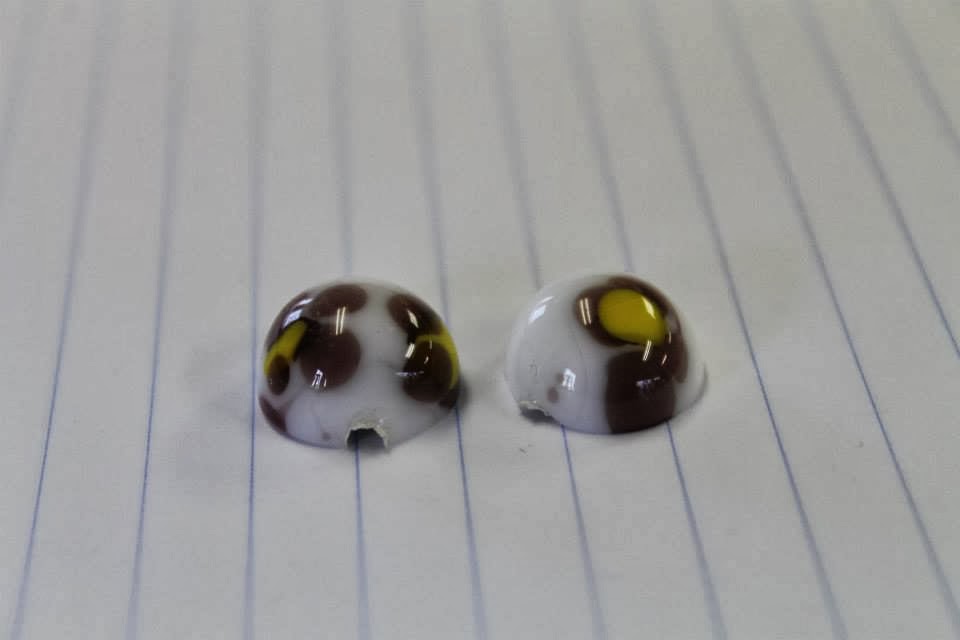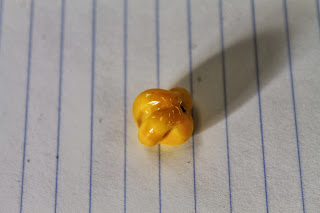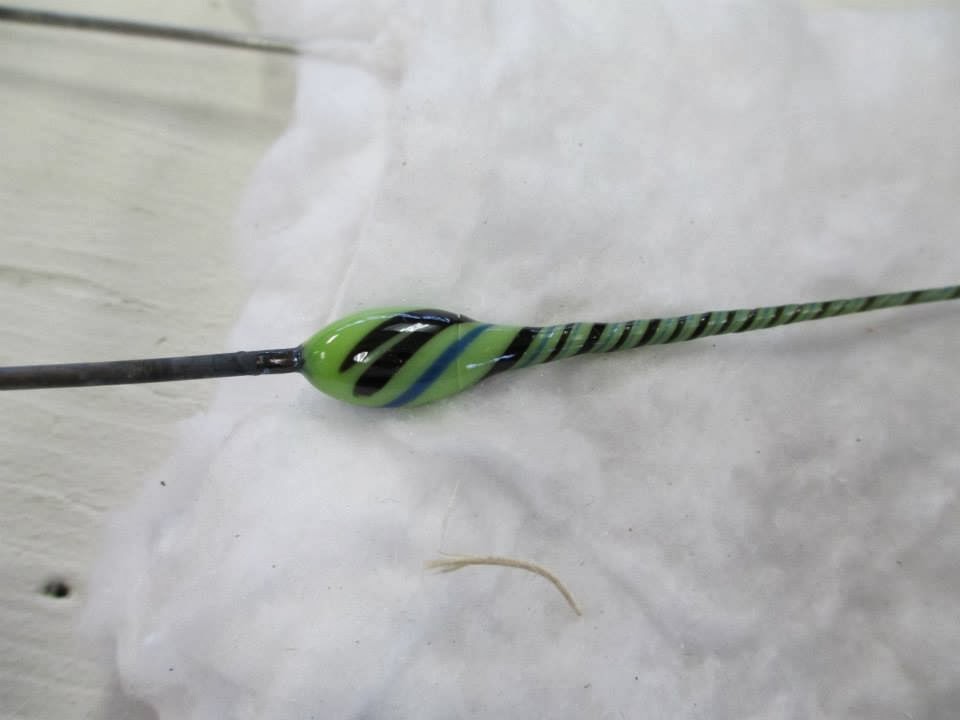Angela:
Overall this experience has been extremely illuminating for me. It had both expected and unexpected results. I expected my joints to give me some problems in the actual beadmaking, but I did not expect this to be more so with the bead removal. I expected that I would not be making professional grade beads, but I neither anticipated how difficult seemingly simple designs would be to do, nor the time it took to actual learn how to them even marginally well. Beadmaking today differs only in minor respects to beadmaking in the Viking Age, and this speaks to how effective the methods used were in that time.
I had a lot of fun doing this experiment, partly because of the task, but largely because of the great group of people I was working with (thanks guys!). Through working together we completed what we set out to do: make glass beads and in that process ponder and successfully answer the three research questions we came into this project with. One question that I have wondered about a lot throughout this project is can just anyone have made beads in the Viking Age? The answer to
this, as Krista stated in the previous blog, is yes (presuming they have access to the materials). However not everyone could have been a beadmaker, and I am living testament to this. My minor health issues would have been major obstacles for my success at becoming a beadmaker in the Viking Age. While my final beads show that I am capable of making beads (albeit a bit sloppily), my joint issues in particular prove that I could never be a beadmaker (not without serious pain issues anyways).
Krista:
I have really enjoyed the whole beadmaking process, and I am glad I was able to do this project. And, as Angela said, a large part of this was because of the group. It would not have been as fun alone, so thank you for sharing this adventure into beadmaking! It was really great to research and explore Viking glass beadmaking, and I loved to see all of our attempts and successes throughout this project.
When I first thought of what we would be doing for this project, I thought we would try to create glass beads in a Viking Age furnace, as close to authentic as possible. Very quickly I realized the reality of making our own furnace was going to be way out of our reach! I think if we had had more time and unlimited resources, I would have loved to include this as part of the project, to actually be able to test the difference between the two techniques. What surprised me though, was that the modern way of making beads is not actually very different in terms of what methods are used. For the scope of this project, with focusing on recreating designs and shapes of Viking beads, using modern techniques was more doable and allowed us to focus on really understanding how to create glass beads.
I think if I was going to do this project again in the future, I would definitely do more sessions at the workshop. Making beads is a slow learning curve and I would have liked to have gotten good enough to recreate some more difficult designs. For this project though, I think the two sessions were enough to understand the process of beadmaking and answer our research questions. But, because of this project, I definitely want to continue making glass beads. I have really enjoyed the challenge of creating different shapes and designs!
Rose:
This
project has taught me a lot about Vikings that I feel I would not be able to
learn in any other way. By recreating the beads, we experienced some of the
challenges and successes that their original manufacturers would have faced.
This is definitely a different way of learning, and it is extremely effective.
Not only did my group members and I learn an interesting skill, we have our own
experience to compare to what we are researching.
For
areas of future research I would try to recreate whole necklaces that were
found on sites such as Birka or Ribe. I would do this because it is important
to acknowledge that individual beads are significant, but they are not the end product.
Making the necklaces would demonstrate the value of the beads as a whole. It
would be interesting to compare the differences between making individual
beads, and making beads to be kept together as a group.
| The Pagan Lady's Necklace |
If
I were to do the project again, I would try to test different ways of making
certain bead shapes. This would contribute a lot to the discipline of Viking
archaeology because I did not find a lot of research on how they made the
individual shapes. This would also be a challenge, because there would not be a
lot of research to compare our results with.
I would also like to thank my group for everything! It has been a pleasure.
EMMA:
Overall this experience has been an eye-opener to the intricate world of
glasswork, providing both expected and unexpected results, as well as introducing
me to the world of the Vikings in a way I could have never imagined. By
recreating beads I was able to experience some of the difficulties a Viking Age
beading apprentice may have endured while learning a new craft, while also
having the satisfaction of learning (and in some cases succeeding) how to
produce a functional work of art through a hands-on engagement with its more
primary materials. My interest in glass bead making was certainly fueled
through the encouragement and positivity emulated throughout the group, making
the beading learning curve more of a fun activity, rather than a challenge to be
endured.
Finally, I would like to thank my fellow group members for their wonderful participation in this experiment- no scalding, cuts, or burning hair! That's an achievement in and of itself- job well done ladies :)






































